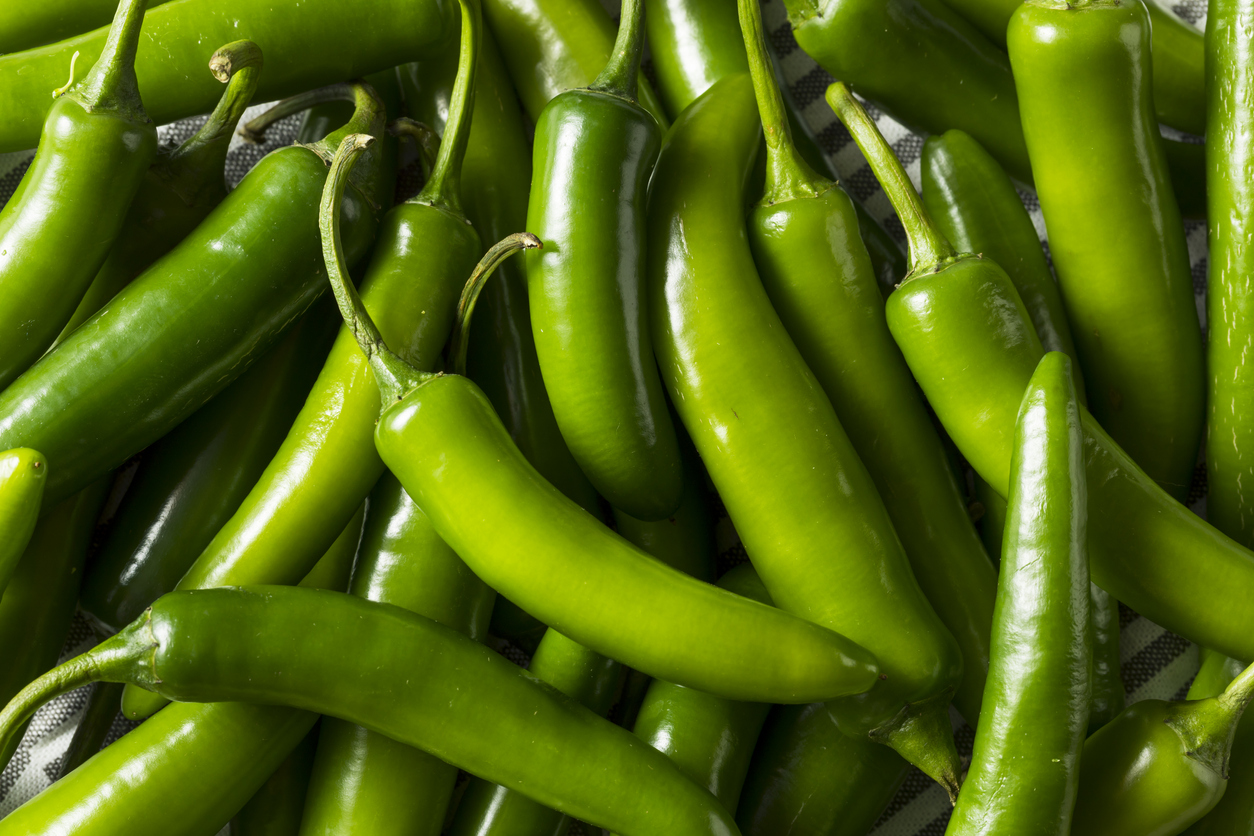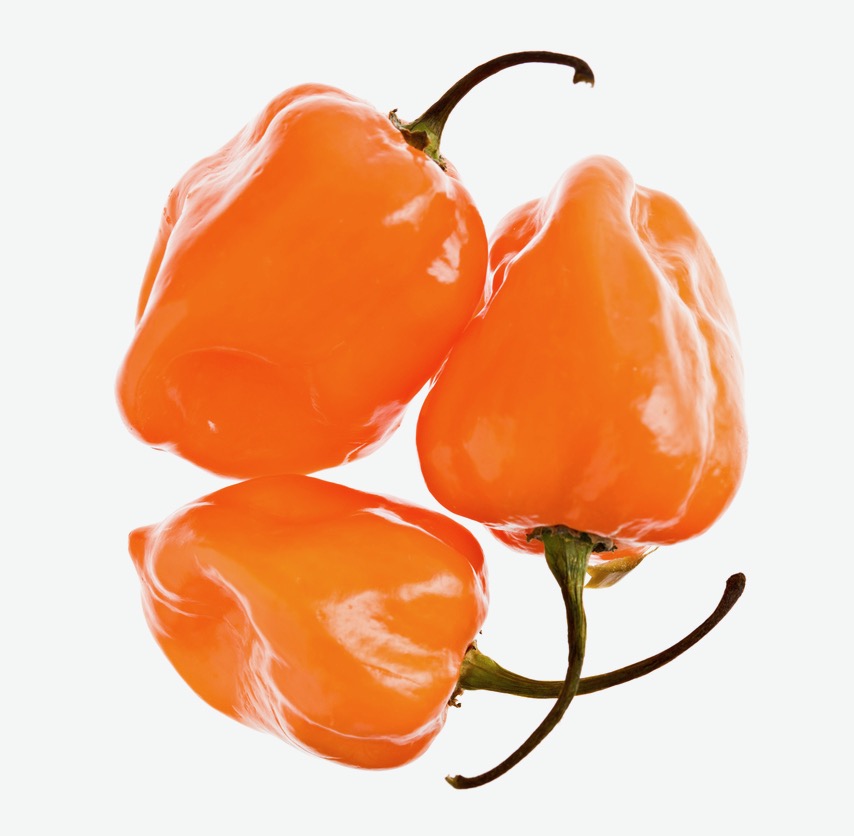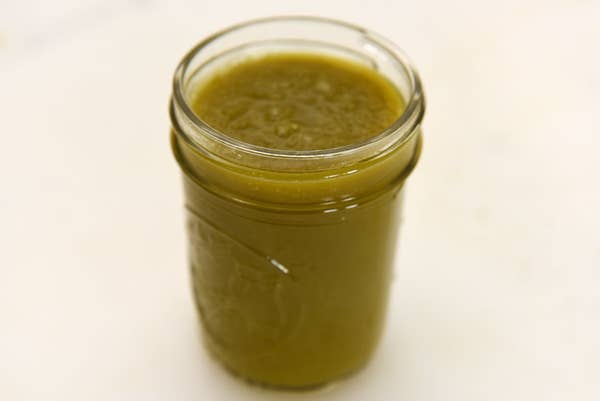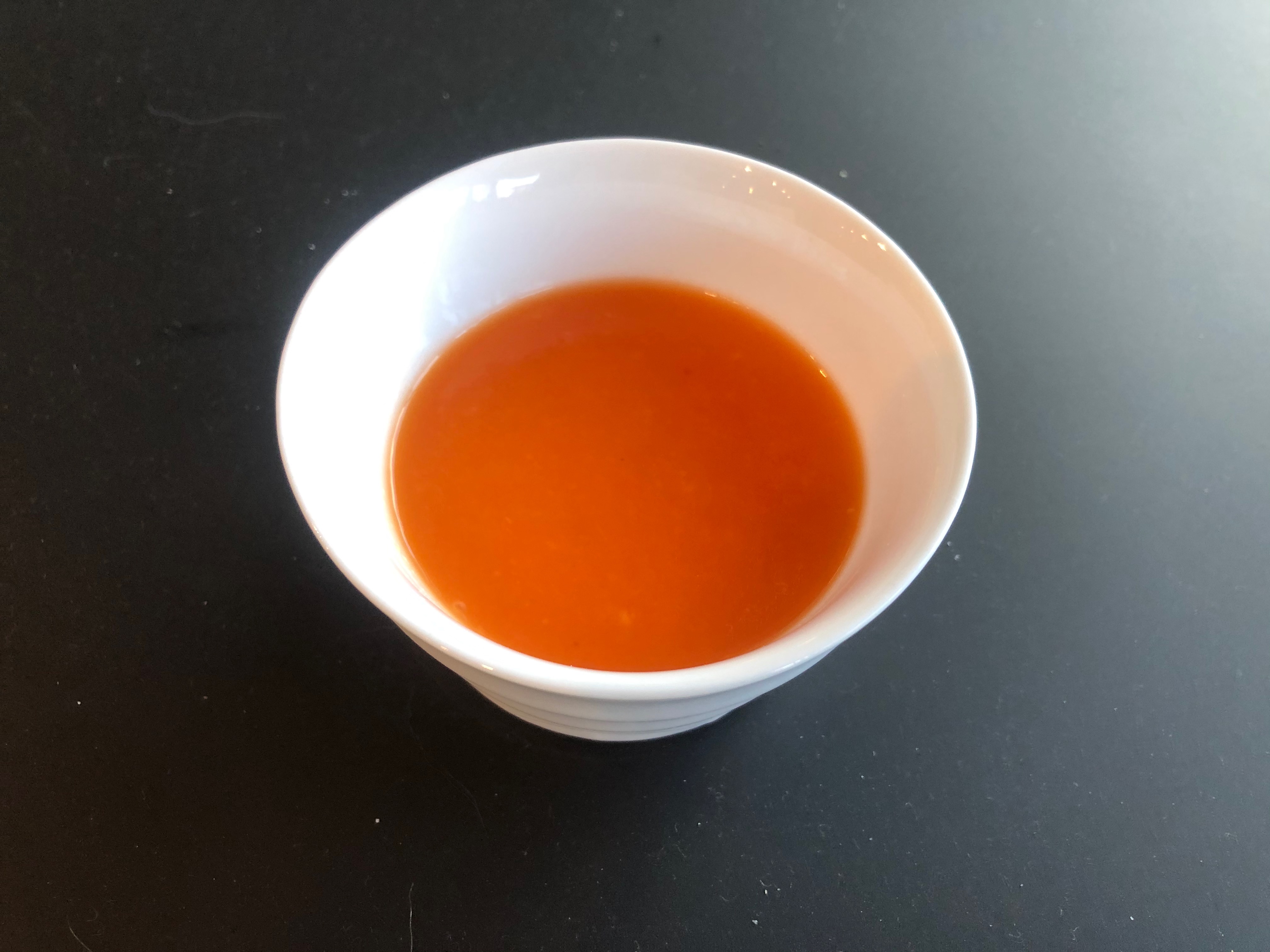A few years ago, I took a cooking class from Chef Jessica Koslow of Sqirl restaurant in Los Angeles, and she brought with her a fermented hot pepper sauce that was totally mind-blowingly good. I have no idea why I waited to long to make it myself, but when I finally did, I did it my way and the results were amazing!
Chef Koslow’s recipe calls for jalapeño peppers, but I did it with serrano chiles, and have since done it with habanero peppers as well. All three versions (the original and my versions) are incredibly flavorful, and the umami from the fermentation gives the sauce some inexplicable deliciousness that you won’t be able to resist.


Use these sauces on everything from Mexican fare (burritos, fish tacos, quesadillas, etc.) to grilled fish, to scrambled eggs to quiche, to grilled steak or chicken. Seriously, this stuff is addictive!
Makes: about 2 cups
Total time: 4 weeks (for fermentation)
Active time: about 1 hour
Ingredients:
1 pound of your choice of hot chile peppers (serrano is my favorite)
kosher salt (see recipe for how to determine proper amount)
2 cups water
1 cup distilled white vinegar
[NOTE: Handling hot chile peppers will leave a spicy oil on your hands, that burns if you put your fingers in your eyes or touch other sensitive areas. You may want to use disposable gloves as you handle them. Also note that the very hot chiles like habaneros also emit strong fumes. You may want to work near the stove with the overhead fan running.]
Cut the tops of the peppers, split them in half lengthwise, and use a paring knife to remove the veins and seeds. Roughly chop the chiles and put in the bowl of a food processor. Purée until the mixture is blended, there are no large chunks of pepper, but it’s still a bit chunky.
The mash needs to be exactly 7.5% salt, so it’s important to measure with a scale. First of all, measure the weight in grams of the chile pepper mixture after it’s blended. Once weighed, put the chile mixture back in the food processor bowl. Use this formula to calculate the amount of needed salt:
Weight of blended peppers x 0.075 = Weight of kosher salt
As an example, if your puréed peppers weigh 1 pound, which is equivalent to 454 grams, you will use 35 grams of kosher salt. Add the right amount of salt to the food processing bowl, and process just enough to mix.
Put the mash into a clean, wide-mouthed glass jar.
Next you’ll make a brine (water and kosher salt) using the exact same formula of 7.5% salt. The reason for this is that you’ll put the brine in a ziploc bag and completely cover the mash (no air gaps). If the bag happens to leak at all during fermentation, the same salt percentage will preserve the mash. Measure 2 cups of slightly warm water and put in a ziploc bag, then add 37.5g of kosher salt, get as much air out of the bag as possible, then seal it.
Put the plastic bag over the mash in the open jar, stuffing it in there so that there is absolutely no air between the mash and the bag, and no way for air to get to the mash. Label the jar with the date four weeks later so you know when the mash is fully fermented. Put the jar in a cool, dark corner or cabinet where it will remain undisturbed.
Once the 4 weeks are up, discard the plastic bag and transfer the mash to a stainless steel pan and place on the stove. Add 1 cup vinegar and bring to a simmer. Transfer the mixture to a blender or food processor and purée until you have a uniform, smooth liquid. Store in an airtight container in the fridge. It will keep for 6 months.

Enjoy!


0 Comments